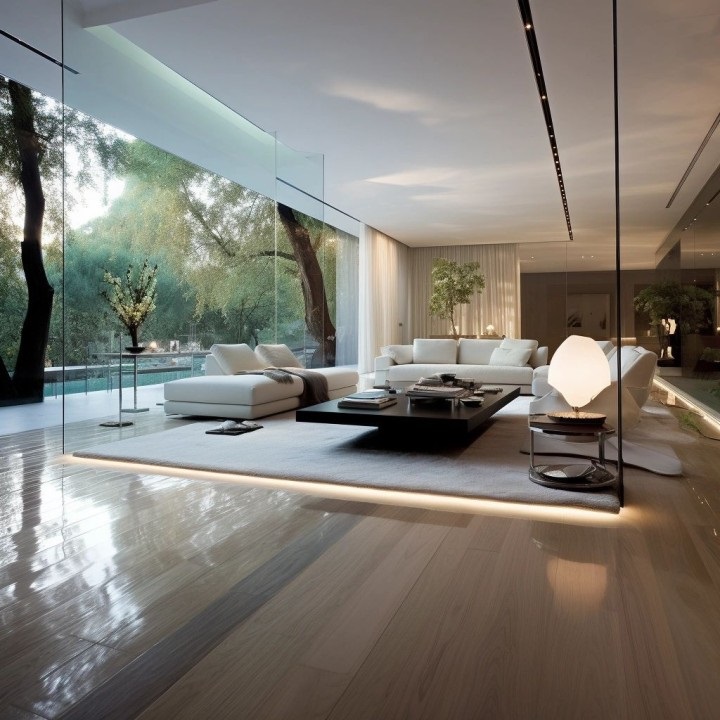Interior design, once a territory marked by aesthetics, personal taste, and professional expertise, has ventured into the digital age, courtesy of smart technology. With the advent of intelligent gadgets, the home environment has evolved to become more than just visually appealing; it’s now adaptive, efficient, and responsive. Smart shades and customized lighting solutions have emerged as formidable allies to designers and homeowners alike, offering new avenues to create spaces that not only capture the eye but also tailor the ambiance to our daily rhythms.
Smart Shades in Interior Design
Smart shades, a marvel in modern window treatment solutions, have revolutionized the way we interact with natural light. Through their application, we can control the ambiance of a room with unparalleled precision, all at the touch of a button—or even a voice command.
The Light They Bring In
Smart shades are more than mere window dressing; they’re conductors of the light that fills our living spaces. By managing the ingress of sunlight, smart shades can positively influence the mood and perceived size of a room. Their role in maintaining a well-lit yet glare-free environment cannot be understated, especially in homes where large windows are a prominent feature.
The Power of Efficiency
Energy efficiency is a contemporary concern and smart shades are a stalwart in this arena. They contribute to the upkeep of an ideal temperature and, in turn, reduce the reliance on heating and cooling systems. This not only aligns with sustainable living practices but also translates to substantial savings on utility bills.
The Integration Edge
One of the most exciting aspects of smart shades is their compatibility with home automation systems. Seamlessly integrated into a network, they can be scheduled to operate based on the time of day, and the intensity of sunlight, or synchronized with other devices to create a holistic smart home experience.
Customized Lighting Effects
Lighting is a dynamic component of interior design—it has the power to transform a space from cozy to clinical, inviting to intimate. Customized lighting takes this power one step further, injecting personality and enhancing the salient features of a room.
A Balancing Act
The placement and type of lighting can make or break a design. Smart lighting systems provide homeowners with the flexibility to balance task lighting, ambient lighting, and accent lighting to achieve the perfect blend. Adjusting the brightness or color temperature ensures that the lighting always complements the time of day or the activity at hand.
Setting the Mood
Whether it’s the warm glow of a sunset filter or the cool radiance of daylight, smart lighting can mimic natural light at its various stages, affecting our circadian rhythms and setting a consistent mood. With presets and programmable cycles, the transition from a lively morning to a restful night is choreographed with precision.
The Art of Personalization
Smart lighting is innately personal. It allows one to express individuality by selecting colors and tones that resonate with their unique style. From a vibrant palette to a subdued monochrome, the canvas is ready for one’s artistic illumination.
Tips for Implementation
For those looking to venture into the world of smart shade and lighting technology, here’s a roadmap to a successful integration.
Understanding the Layout
Before committing to any changes, it’s vital to understand the spatial dynamics and the role of light within the layout. Identifying key areas where customization is desirable will help in decision-making.
Choosing Your Tech Wisely
The market is flooded with options—choosing the right smart shades and lighting solutions depends on personal needs, budget, and the level of integration one seeks. It’s advisable to conduct thorough research and, ideally, seek professional advice.
The Human Touch
Smart technology should supplement—not override—the design aesthetics. Always ensure that any additions harmonize with the existing decor and architectural plan.
DIY and Beyond
The DIY route is open to the tech-savvy, but for most, consulting with smart home professionals may be the best course of action. Whether self-installing or working with a service, it’s essential to evaluate the skills and time resources available.
Balancing the Books
Smart home tech investment can be significant. It’s wise to map out a budget that includes the cost of the fixtures, installation, and any additional accessories such as control devices.
Conclusion
The union of design prowess with smart technology opens doors to an entirely new dimension of interior spaces. Smart shades and customized lighting are not just trends—they’re foundational elements in the architecture of future living. They offer practical solutions to ongoing challenges and, consequently, enrich our homes with efficiency, flexibility, and an undeniable charm.
It is incumbent upon us, as purveyors of our living environments, to embrace these innovations and explore the vast potential they hold. By doing so, we honor the heritage of interior design as an evolving art, forever in step with the rhythms of our advancing world. Fill your rooms with the light and shade that suits you at any moment, and watch as your abode transforms into a testament to good living.

